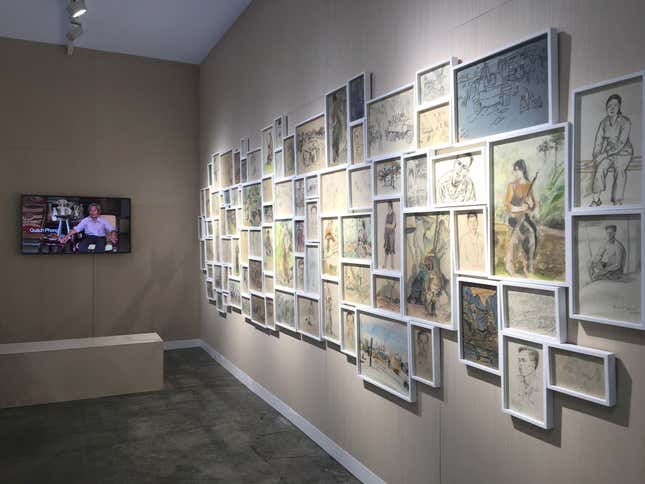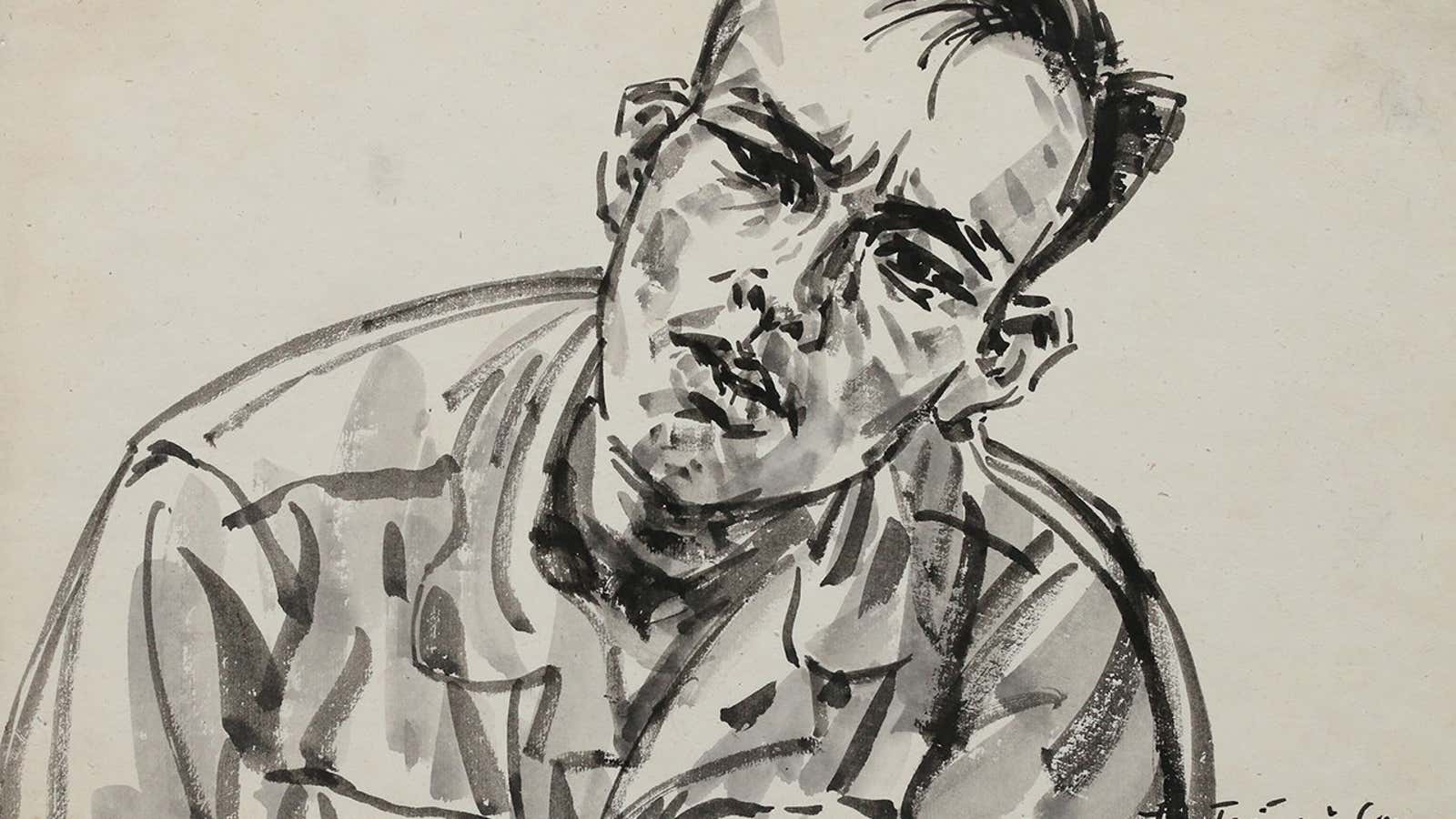In the slightly chaotic atmosphere of the recent Art Basel Hong Kong, the drawings and watercolors displayed at one installation, by local gallery 10 Chancery Lane, captured attention with their calm, sylvan, and even romantic feeling. A bizarre contrast awaited visitors who deigned to learn more about them—they were created by soldiers otherwise busy fighting a war.
The conflict in question was “the Vietnam War” to the US, which saw it as a fight against the “Viet Cong,” the communist north’s encroachment into the south. To the other side it was known as the “Resistance War Against America.”
Western writers, artists, and film directors have produced an abundance of art related to the conflict, and the opposition to it, from Army-sanctioned art to the 1986 Oliver Stone flick Platoon. But there’s also been plenty of art about the war created in Vietnam, including films, songs, sculptures, and paintings.
At the installation at Art Basel Hong Kong, the works on display were encased by white wooden frames and hung close together. Many were portraits of young men and women, often at rest with faint smiles on the faces, sometimes holding rifles.
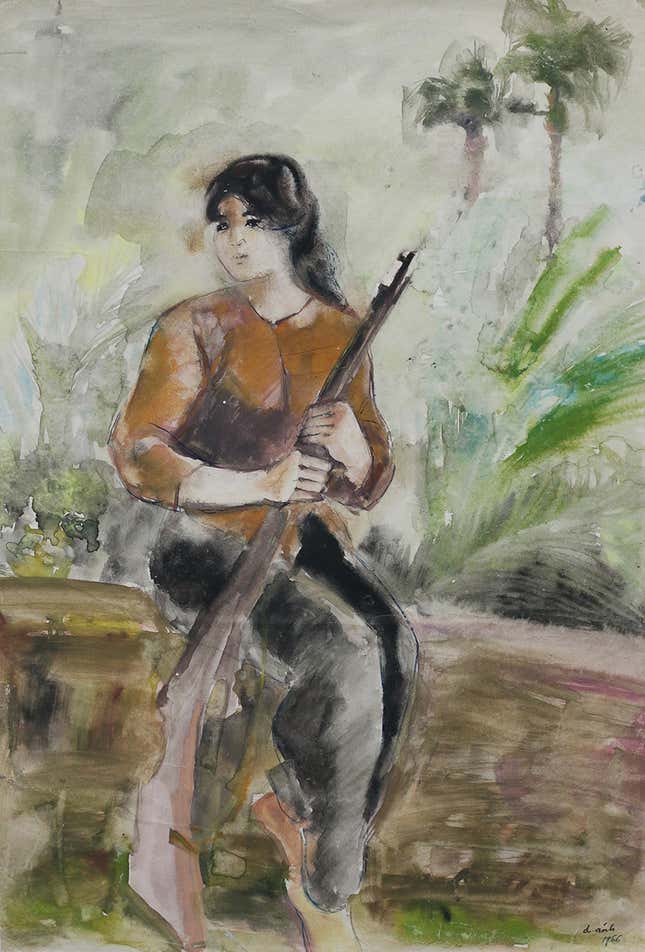
The installation was part of a bigger project called “Light and Belief” by Vietnamese artist Dinh Q. Lê. “I have been collecting these paintings for a few years now,” he says. “I find them really different from the kind of pictorial representation of war you see from Western artists.”
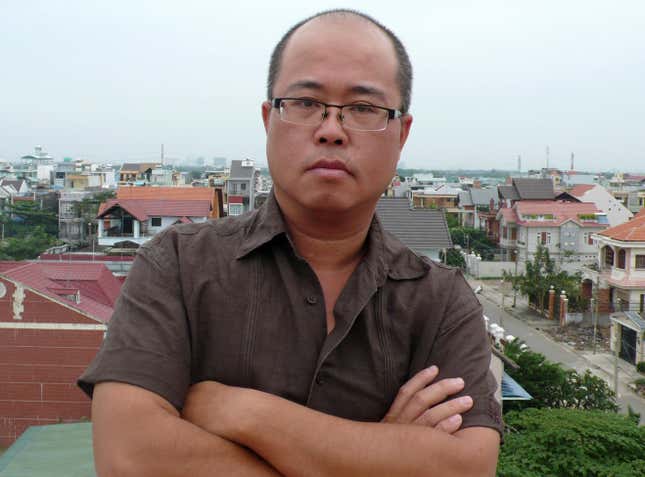
Born in 1968 in Ha Thien, a Vietnamese town near the Cambodian border, Lê escaped Vietnam with his family in 1978, shortly after the Khmer Rouge’s invasion of the area. They resettled in the United States, where his memories of the war soon bumped against the narrative that Americans had of the conflict.
For years the contrasts between the two vantage points made him ponder the subjectivity of recollections, the national narratives of historical events, and the many contradictions created when these intersect. Few things interest him more than what shapes memory, and how memory and history confront each other.
In 1996 Lê returned to Vietnam and set up residency in Ho Chi Minh City (Saigon). He went about collecting antiques and old objects, looking for stories he could link to his own Vietnamese past. During these hunts, he discovered his first soldiers’ paintings, and became interested in knowing more about their creators.
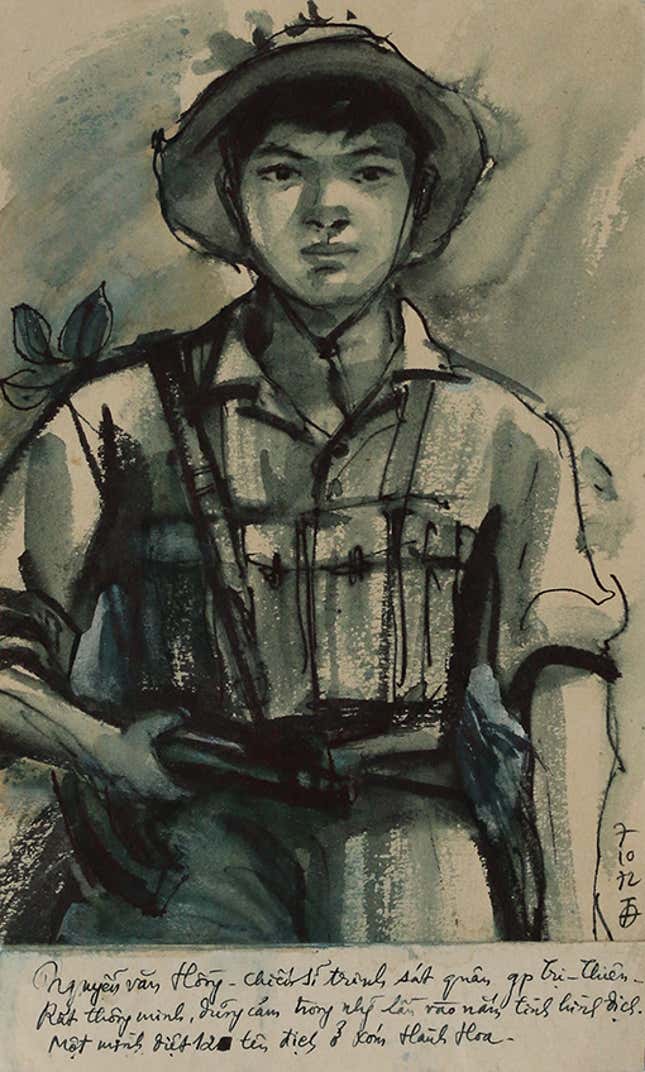
“During the war, artists were sent to take part in the war effort, not purely as artists,” he explains. “They would draw and paint in between fighting.”
Lê also helped produce a documentary featuring interviews with such artists. One, Nguyen Toan Thi, explained the lack of harshness in the artworks. “Why not war and sorrow? Because inherently Vietnamese people have suffered so much already. Hundreds if not thousands of years of war. So many wars on this land. So much sacrifice and loss.”
In many cases, the portraits were “the only time some of the soldiers, men and women, ever had their likeness taken. So they kept it on themselves, as a memento to give to their families and loved ones if they were to die in battle,” Lê says, “which adds to why you see no blood, no suffering in the paintings. They were meant to record a happier moment, not a moment of destruction.”
Parts of Lê’s project have been exhibited at other shows, including in 2012 at Documenta 13 in Germany, and in 2013 at the US’s Carnegie and Japan’s Mori museums.
The project consists of about a hundred paintings, which Lê has divided into three sets. The Carnegie and the Mori each bought a set. Art Basel Hong Kong showed the last one, which was bought by a private collector during the fair.
